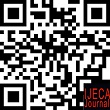Measurement of Educational Feasibility Using Cost and Benefit Analysis at STAINU Temanggung
Abstract
Current social reality produces a conclusion that the purpose of education is inseparable from employment. Therefore, the feasibility of Indonesian education needs to be considered in terms of the benefits obtained by its graduates. Management Discipline has a formula regarding profit and loss. This formula can be adopted in education management. Furthermore, in this study this formula is referred to as a cost and benefit analysis. Adoption of this formula requires a reinterpretation of all the components in it. Net benefit (NB) is the result of reduction and direct benefit and indirect benefits with costs (C) and depreciation (D). This research uses research and development methods Data collection was carried out by interview method and questionnaire. Sampling is carried out by random sampling technique The results of this calculation are then consulted with the range that has been made in the form of a percentage. The trial conducted on the feasibility of education at STAINU Temanggung University showed that the educational feasibility level at the faculty was 29.72%. This means that the university has an enough feasible meaning in implementing education if analyzed from a cost and benefit analysis
Keywords
Full Text:
Download [PDF]References
Agus Irianto. (2010). Pendidikan Sebagai Investasi Dalam Pembangunan Suatu Bangsa. Jakarta: Kencana Media Grup.
Ayu Laila Rahmiyati’. (2018). Cost and Benefit Analysis (CBA) Program Pemberian Makanan Tambahan (PMT) Susu Pada Karyawan di PT. Trisula Textile Industries Tbk Cimahi Tahun 2018. Jurnal Ekonomi Kesehatan Indonesia, 3(1), 125–134.
Benni Setiawan. (2008). Agenda Pendidikan Nasional. Yogyakarta: Ar-Ruzz Media.
Camphel, H & Brown. (2003). Benefit Cost Analysis. Newyork: Cambrige University Press.
Erich A.Helfert. (1997). Teknik Analisis Keuangan. Jakarta: Erlangg.
Husna Nashihin. (2019). Analisis Wacana Kebijakan Pendidikan (Konsep dan Implementasi). Semarang: Pilar Nusantara.
Nanang Fatah. (2012). Analisis Kebijakan Pendidikan. Bandung: Rosda Karya.
Nelly Budiyarti. (t.t.). Hubungan Kepemimpinan Kepala Sekolah Dan Produktivitas Kerja Guru Dengan Kesehatan Organisasi Sekolah Dasar Negeri di Pancoran Jakarta Selatan. Jurnal Paedagoria, 10(2), 127–134.
Nuryadi. (2014). Cost and Benefit Analysis Antara Pembelian Alat CT-Scan Dengan Alat Laser DIODA Photocoagulatordi RSD Balung Jember. Jurnal IKESMA, 10(1), 49–58.
Radiks Purba. (1997). Analisis Biaya dan Manfaat (Cost and Benefit analysis). Jakarta: PT. Rineke Cipta.
Raka Aryo Kinanthi. (2017). Analisis Kelayakan Investasi Sistem Informasi Pendistribusian Produk Menggunakan Metode Cost and Benefit Analysis Pada PT. Guna Atmaja Jaya. Jurnal Teknik ITS, 6(2), 338–340.
Sugiyono. (t.t.). Metode Penelitian Pendidikan Pendekatan Kuantitatif, Kualitatif, dan R&D. Bandung: Alfabeta.
DOI: https://doi.org/10.31764/ijeca.v3i1.2062
Refbacks
- There are currently no refbacks.
Copyright (c) 2020 IJECA (International Journal of Education and Curriculum Application)

This work is licensed under a Creative Commons Attribution-ShareAlike 4.0 International License.
IJECA (International Journal of Education and Curriculum Application) already indexed:










___________________________________________________________________
| |
____________________________________________________________________
IJECA Publisher Office:







.jpg)




